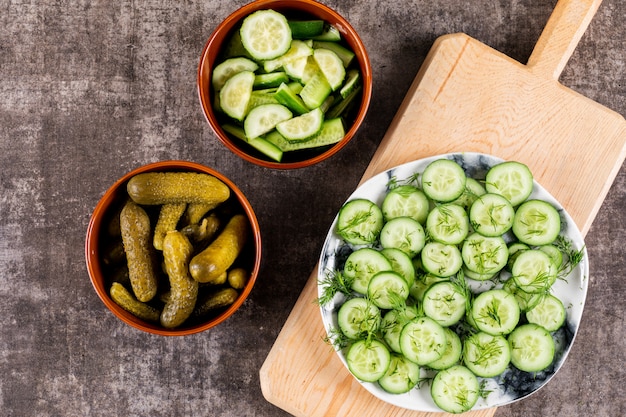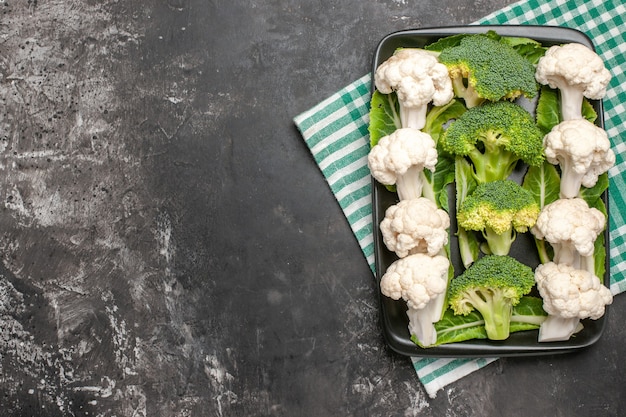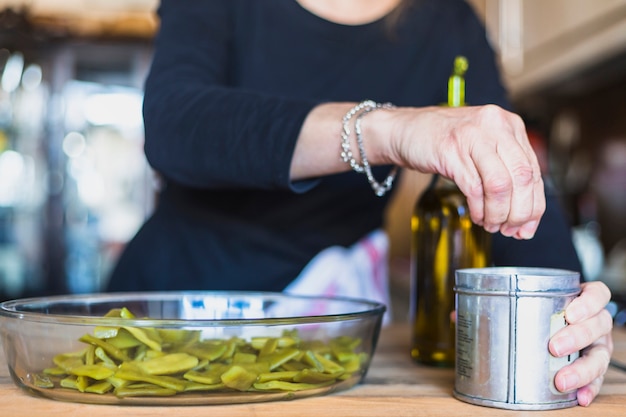Let's talk Brussels sprouts, those little green orbs that often get a bad rap. But believe me, they're a seriously underrated vegetable, especially when cooked right! This guide is your one-stop shop for mastering the art of brussels sprout cooking, transforming those potential culinary disasters into delicious side dishes. I'll share my personal tips and tricks, based on years of trial and error (and a few burnt batches). Let's get started!
Part 1: Why Bother with brussels sprout cooking times?

You might be thinking, "Why is the cooking time for these little green guys so important?" Well, it's the difference between a delightful side dish and a mouthful of bitter disappointment.
Undercooked vs. Overcooked: It's All About Balance
Imagine biting into a Brussels sprout that's still hard and crunchy, with a slightly raw, unpleasant taste. Not ideal, right? Now picture a mushy, flavourless blob that's lost all its vibrant green colour. Not exactly appetizing either. It's a delicate balance, but we'll figure it out together.
Part 2: Factors Affecting Brussels Sprout Cooking Time

Before diving into specific cooking times, let's understand the factors that influence how long your Brussels sprouts need to cook.
1. Size Matters: Big or Small?
It's a simple truth: Larger Brussels sprouts take longer to cook than smaller ones. It's like comparing a miniature sausage to a large banger – you need to give that big banger extra time to cook through.
2. Cooking Method: Each Method Has Its Own Rules
Different cooking methods, like roasting, steaming, or pan-frying, require different cooking times. Think about it: You wouldn't roast a chicken the same way you'd microwave it, would you?
3. Desired Texture: Crispy, Tender, or Somewhere In Between?
Do you like your Brussels sprouts crispy and slightly charred? Or do you prefer them tender and creamy? Your preferred texture will determine the cooking time. For example, a crispy texture requires a shorter cooking time compared to a softer, more tender result.
Part 3: Roasting Brussels Sprouts: The Classic Method

Roasting is my personal favourite way to cook Brussels sprouts. It brings out their natural sweetness and gives them a lovely crispy exterior. Let's explore the ins and outs of roasting these little gems.
Preparation: Setting the Stage for Deliciousness
1. Wash and Trim: Start by washing your Brussels sprouts thoroughly. Cut off the tough ends and remove any loose leaves.
2. Halving or Quartering: Halve or quarter the sprouts depending on their size. Aim for roughly the same size pieces so they cook evenly.
3. Toss with Seasonings: In a bowl, toss the sprouts with a drizzle of olive oil, salt, and pepper. Don't be afraid to get creative with spices and herbs! Smoked paprika, garlic powder, chilli flakes, even a sprinkle of nutmeg can add a lovely depth of flavour.
4. Spread on a Baking Sheet: Spread the seasoned sprouts in a single layer on a baking sheet. Make sure they're not overcrowded, otherwise, they'll steam instead of roast.
roasting time: It's All About Patience and Observation
Temperature: 400°F (200°C) is the sweet spot for roasting Brussels sprouts.
Starting Time: 20-30 minutes is a good starting point, depending on the size of your sprouts and how crispy you like them.
Check Regularly: After 20 minutes, check them. You want them to be tender and slightly browned on the edges. If they're still a bit firm, give them another 5 minutes.
Charring for Extra Flavour: Want those crispy, charred edges? Leave them in the oven for a few more minutes to get that extra bit of char.
roasting tips: Elevate Your Brussels Sprout Game
Experiment with Spreads: For a richer flavour, try spreading a little Dijon mustard or balsamic glaze on the sprouts before roasting.
Add a Bit of Sweetness: A sprinkle of brown sugar or maple syrup can balance out the bitterness and add a touch of sweetness.
Get Creative with Herbs: Try adding fresh herbs like rosemary, thyme, or sage to the baking sheet for a fragrant aroma.
Part 4: Steaming Brussels Sprouts: A Gentle Approach
Steaming is a great option if you want to retain the vibrant green colour and tender texture of your Brussels sprouts. Let's explore this gentle method.
Steaming 101: Simple and Effective
1. Wash and Trim: Wash your sprouts and trim the ends.
2. Steam Basket: Place them in a steamer basket over a pot of boiling water.
3. Steaming Time: Steam for about 10-15 minutes, or until tender.
4. Test for Tenderness: Use a fork to pierce a sprout – if it goes through easily, they're done.
Tips for Steaming Success: Ensuring Even Cooking
Don't Overcrowd: Make sure the sprouts aren't overcrowded in the steamer basket. This will help them cook evenly.
Season the Water: Add a pinch of salt to the boiling water for extra flavour.
Add Aromatics: You can add other ingredients to your steamer basket, such as garlic cloves, ginger, or lemon slices, for extra flavour.
Steaming Variations: Adding More Depth of Flavour
Citrus Infusion: Add lemon or lime slices to the steamer basket for a citrusy twist.
Herby Goodness: Try adding fresh herbs like thyme or parsley for a fragrant steam.
Part 5: Pan-frying Brussels Sprouts: Crispy Perfection
For those of you who like your Brussels sprouts with a crispy exterior and a slightly caramelized flavour, pan-frying is the way to go. Let's explore this method in more detail.
Pan-frying Delights: A Quick and Easy Method
1. Prep: Wash, trim, and halve or quarter your sprouts as described previously.
2. Heat the Oil: Heat a tablespoon or two of olive oil in a large skillet over medium heat.
3. Fry: Add the sprouts to the skillet and cook for about 5-7 minutes per side, turning them occasionally, until golden brown and tender. Don't overcrowd the skillet – cook them in batches if necessary.
4. Season: Season with salt and pepper to taste. You can also add other seasonings like garlic powder, onion powder, or smoked paprika to the skillet.
Pan-frying Tips: Achieving Crispy Perfection
Don't Overcrowd: Make sure there's enough space between the sprouts in the skillet so they get crispy on all sides.
High Heat: Use high heat for a crispy exterior.
Deglaze: Once the sprouts are cooked, deglaze the pan with a splash of white wine or chicken broth for extra flavour.
Part 6: Boiling Brussels Sprouts: The Basic Method
Boiling isn't my preferred method (it can lead to a bland and mushy result), but it's a quick and simple option for those who prefer it.
Boiling Basics: A Straightforward Approach
1. Wash and Trim: Wash and trim the Brussels sprouts as usual.
2. Boil Water: Bring a pot of salted water to a boil.
3. Add Sprouts: Add the sprouts to the boiling water and cook for about 5-8 minutes, or until tender.
4. Test for Tenderness: Use a fork to test the tenderness.
5. Drain: Drain the sprouts in a colander and serve immediately.
Tips for Boiling Success: Avoiding Overcooked Brussels Sprouts
Don't Overcrowd: Don't overcrowd the pot. The sprouts need space to cook evenly.
Cold Water Plunge: If you're boiling sprouts for a salad, plunge them into cold water after they're cooked to stop the cooking process and preserve their vibrant green colour.
Part 7: Microwave Brussels Sprouts: The Quick Fix
Let's face it: sometimes you just need a quick and easy side dish. In those situations, the microwave can be your best friend.
Microwave Magic: Fast and Convenient
1. Wash and Trim: Wash and trim the Brussels sprouts as always.
2. Steam: Place the sprouts in a microwave-safe bowl with a splash of water.
3. Cover: Cover the bowl with a microwave-safe lid or plastic wrap with a few holes poked in it.
4. Microwave: Microwave on high for 5-7 minutes, or until tender.
5. Check: Remove the lid or plastic wrap carefully (it will be hot!). Use a fork to check if they are tender.
Microwave Tips: Ensuring Even Cooking
Stir Halfway: Stir the sprouts halfway through cooking for even cooking.
Use a Microwave-Safe Steamer: A microwave-safe steamer basket can help retain moisture and prevent the sprouts from drying out.
Part 8: Brussels Sprout Storage: Keeping Them Fresh
Now that you know how to cook them, let's talk about how to store them so they stay fresh and ready to use.
Storage Solutions: Maximizing Freshness
Refrigerator: Store unwashed Brussels sprouts in a plastic bag in the refrigerator for up to 10 days.
Freezing: To freeze Brussels sprouts, blanch them first by boiling them for 3-4 minutes and then plunge them into ice water. Drain and pat dry. Then, put them in freezer bags in single layers, removing as much air as possible. Frozen Brussels sprouts can last up to 8 months.
Part 9: Variations and Additions: Get Creative
Let's move onto some fun ways to add extra flavour and excitement to your Brussels sprouts.
Spices and Herbs: A World of Flavour
Garlic: Roasted garlic Brussels sprouts are a classic combination. Try roasting them with whole garlic cloves for a more intense garlic flavour.
Rosemary: Fresh rosemary adds a lovely earthy flavour, especially when paired with roasted brussels sprouts.
Smoked Paprika: Smoked paprika gives your sprouts a smoky depth, perfect for those who enjoy a bit of spice.
Chili Flakes: For a bit of heat, try adding a pinch of chili flakes to your roasting pan or skillet.
Other Ingredients: Adding Layers of Texture and Flavour
Bacon: Who doesn't love bacon? Adding crispy bacon bits to your Brussels sprouts is a winning combo, whether you're roasting, pan-frying, or even adding it to a salad.
Nuts: Toasted pecans, almonds, or walnuts add a nutty crunch and a touch of richness. Try tossing them with roasted Brussels sprouts for a delightful contrast in textures.
Dried Cranberries: The sweetness of dried cranberries balances the bitterness of the sprouts, creating a sweet and savoury combination. They're delicious in salads or roasted with Brussels sprouts.
Lemon: A squeeze of lemon juice brightens the flavour and adds a touch of acidity, complementing the sweetness of roasted or steamed Brussels sprouts.
Part 10: brussels sprout recipes: From Simple to Spectacular
Ready for some recipe inspiration? Here are a few of my favourite ways to cook Brussels sprouts:
1. Simple Roasted Brussels Sprouts: A Classic Recipe
Ingredients: 1 pound Brussels sprouts, trimmed and halved, 2 tablespoons olive oil, salt and pepper to taste.
Instructions: Toss the sprouts with olive oil, salt, and pepper. Spread them on a baking sheet and roast at 400°F (200°C) for 20-30 minutes, or until tender and lightly browned.
2. crispy brussels sprouts with Bacon: A Savoury Delight
Ingredients: 1 pound Brussels sprouts, trimmed and halved, 4 slices bacon, cooked and crumbled, 2 tablespoons olive oil, salt and pepper to taste.
Instructions: Toss the sprouts with olive oil, salt, and pepper. Spread them on a baking sheet and roast at 400°F (200°C) for 20-30 minutes. Remove from the oven and add the crumbled bacon. Toss to combine and serve.
3. Brussels Sprout Salad with Lemon Vinaigrette: A Refreshing Option
Ingredients: 1 pound Brussels sprouts, trimmed and thinly sliced, 1/4 cup olive oil, 2 tablespoons lemon juice, 1 tablespoon Dijon mustard, salt and pepper to taste.
Instructions: Toss the sliced sprouts with olive oil, lemon juice, Dijon mustard, salt, and pepper. Serve chilled.
4. Pan-fried Brussels Sprouts with Garlic and Chili Flakes: A Flavorful and Spicy Treat
Ingredients: 1 pound Brussels sprouts, trimmed and halved, 2 tablespoons olive oil, 2 cloves garlic, minced, 1/4 teaspoon red pepper flakes, salt and pepper to taste.
Instructions: Heat the olive oil in a large skillet over medium-high heat. Add the garlic and chili flakes and cook for 30 seconds, or until fragrant. Add the Brussels sprouts and cook, stirring occasionally, until golden brown and tender, about 5-7 minutes per side. Season with salt and pepper to taste.
5. Steamed Brussels Sprouts with Lemon and Herbs: A Light and Refreshing Side Dish
Ingredients: 1 pound Brussels sprouts, trimmed, 1 tablespoon olive oil, 1/4 cup chopped fresh parsley, 1/4 cup chopped fresh dill, 1/4 cup lemon juice, salt and pepper to taste.
Instructions: Steam the Brussels sprouts until tender. While they are steaming, combine the olive oil, parsley, dill, lemon juice, salt, and pepper in a small bowl. Toss the steamed Brussels sprouts with the lemon and herb mixture and serve.
6. Brussels Sprouts with Toasted Nuts and Dried Cranberries: A Festive Side Dish
Ingredients: 1 pound Brussels sprouts, trimmed and halved, 1/4 cup olive oil, 1/4 cup toasted pecans or almonds, 1/4 cup dried cranberries, salt and pepper to taste.
Instructions: Toss the Brussels sprouts with olive oil, salt, and pepper. Spread them on a baking sheet and roast at 400°F (200°C) for 20-30 minutes, or until tender and slightly browned. Toss with the toasted nuts and dried cranberries before serving.
Part 11: FAQs: Your Brussels Sprout Queries Answered
Here are some common questions about Brussels sprouts, answered in my own words:
1. How do I tell if Brussels sprouts are bad?
Look for any signs of wilting, yellowing, or black spots. If they smell off, don't eat them! They should feel firm and have a fresh, green colour.
2. Can I use frozen Brussels sprouts?
Absolutely! Just make sure they are thawed before cooking. You may need to adjust the cooking times slightly, so keep a close eye on them. Frozen Brussels sprouts are a great convenience and can save you time in the kitchen.
3. What can I do with leftover Brussels sprouts?
Leftover roasted Brussels sprouts are great in salads, soups, or even as a topping for pizza. They add a nice textural contrast and a burst of flavour.
4. Are Brussels sprouts good for you?
Yes! They're packed with vitamins, minerals, and antioxidants. They're also a good source of fibre, which is essential for digestive health.
5. Why are my Brussels sprouts so bitter?
The bitterness of Brussels sprouts can be caused by several factors, including overcooking, using older sprouts, or not trimming the ends properly. Overcooking is a common culprit. Older sprouts tend to be more bitter than fresh ones. Make sure to trim the tough ends properly, as they can contribute to bitterness.
6. How do I prevent Brussels sprouts from getting mushy?
Don't overcook them! They should be tender but still have a bit of bite to them. Using a dry cooking method, like roasting or pan-frying, can help prevent them from getting mushy.
7. Can I cook Brussels sprouts whole?
Yes, you can cook Brussels sprouts whole. This is a good option for smaller sprouts, as they will cook evenly. However, larger sprouts may benefit from being halved or quartered for more even cooking.
8. How do I know when Brussels sprouts are done?
They should be tender when pierced with a fork. They should also be slightly browned on the edges if you're roasting them.
9. Can I add Brussels sprouts to a stir-fry?
Absolutely! Brussels sprouts are a great addition to stir-fries. They add a nice crunch and a bit of sweetness. Just make sure to cook them until tender, but not mushy.
The Bottom Line: Embrace the Brussels Sprout!
Don't be scared to experiment with different cooking methods, spices, and recipes. There's a world of delicious possibilities waiting to be discovered in the realm of Brussels sprouts. So give them a chance – you might just find yourself falling in love with these little green gems. Happy cooking!
Everyone is watching

How to Cook Frozen Lobster Tails Perfectly: A Step-by-Step Guide
RecipesLobster. Just the word conjures up images of lavish meals, special occasions, and a taste of luxury. But let's...

Pigs in a Blanket Cooking Time: How Long to Bake for Perfect Results
RecipesAh, pigs in a blanket. Just the name conjures up images of those delightful little parcels of crispy pastry en...

Pork Fillet Cooking Time: How Long to Cook It Perfectly
RecipesPork fillet, or tenderloin as it's sometimes called, is a real favourite in our house. It's so versatile, and...

The Ultimate Guide to Cooking Delicious Frankfurters
RecipesLet's face it, we all love a good frankfurter. It's a classic, simple, and always satisfying. But let's be rea...

Wolf Meat Recipes: A Guide to Cooking Wild Game
RecipesLet's be honest, you don't see wolf meat at your local butcher shop every day. It's a bit of a wild card, but ...
